|
| |
Back to private
aircraft
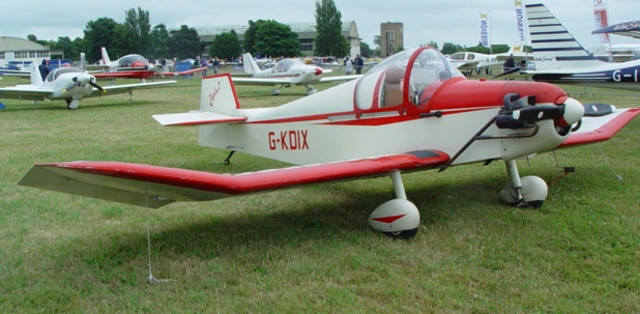 |
The Jodel D9 Bebe (Baby) was the first design
to be built by the outstandingly successful partnership of Eduard
JOly and Jean DELemontez. It introduced the famous `bent
wings': by having a single, straight spar, construction was
simplified; the straight wing produces lower drag than a dihedral
wing; and the upturned ends to the wings provide the stability in
roll for which dihedral is normally used. The result is a very
efficient, economical design. The D9 is a single seater, mainly
intended for homebuilt construction, normally powered by converted
Volkswagen engines ranging from 1200 to 1600cc. Gross weight is
705lb, length 17 feet 10 inches, wing span 22 feet 11 inches. It
cruises at 85mph for a range of 250 miles. It first flew around
1948. Several hundred have been built, mostly homebuilts. This one, fitted with an enclosed
cockpit, was at Kemble in July 2005. |
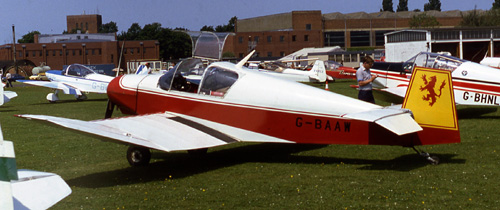 |
The Jodel D11 series is the two seat
derivative of the D9. This initial one flew in April 1950. Many
different versions were built by different manufacturers throughout
France in huge numbers. This is a 90 hp D119, of which a few were
built by Valladeau in France, plus many by private builders.
Cranfield, July 1983 |
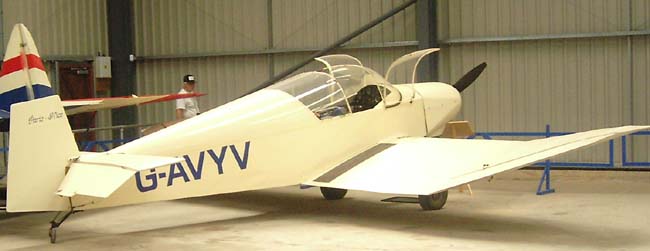 |
The Jodel D120 Paris-Nice was a luxury
version of the basic two-seat Jodel. It was developed from the D9,
and first flew in 1955.
The name refers to its range of 620 miles, enough to get from Paris
to Nice without refuelling. Its 95hp Continental C90 engine enables
it to cruise at 120mph. Development and production of the D120 was
undertaken by Wassmer Aviation at Issoire, who built about 340 of
them. The D120 has a gross
weight of 1,430lb, length of 20 feet 10 inches and wing span of 27
feet.
This one was at Old Warden in April 2005. Photograph by Ivy |
|
|
The Jodel D140 Mousquetaire is the largest
member of the Jodel range, and a truly capable touring aircraft. It
is a four seater, powered by a 180hp Lycoming O-360 engine. This
version was developed by the Societe Aeronautique Normande (SAN),
based at Bernay. It cruises at 140mph and has a range of 800 miles.
Gross weight is 2,645lb; length, 25 feet 11 inches; wing span, 33
feet 6 inches. Most D140s have a very distinctive pointed tail,
though the later models had a more conventional looking squared-off
tail. The Mousquetaire first flew in 1958. Around 240 were built.
The top picture shows a classic Mousquetaire at
Cranfield in July 1983. The lower picture shows a square-tail D140C
visiting Top Farm in Summer 2005. |
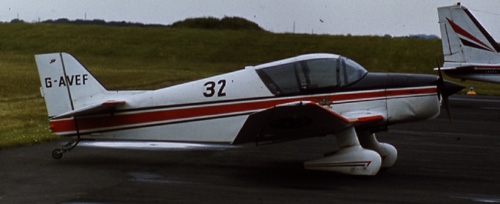 |
The Jodel D150 Mascaret is a substantial
update of the two-seat Jodel, with a swept fin and all-moving
tailplane. It was produced by Societe Aeronautique Normande (SAN) at
Bernay. Powered by a 100hp Continental engine, it cruises at 135mph
and has a range of 1,050 miles. It is an extremely good machine, of
which many survive.
Newcastle, 1977. |
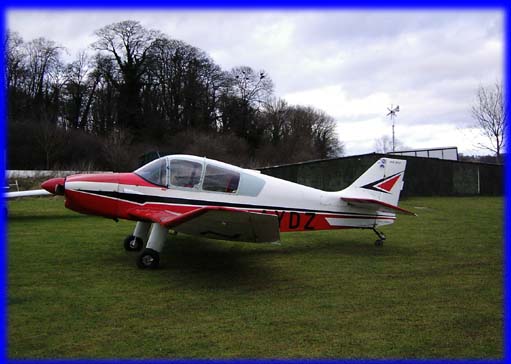 |
The Jodel DR200 is interesting in being a
one-off prototype which was built by Centre Est Aviation (CEA) as a
bridge between their successful DR1050 / 1051 range and its
successor, the DR221 Dauphin. The `DR' designation refers to Jean
Delemontez and Pierre Robin, the founder of CEA, who collaborated in
the design. The downfall of the DR200 was its 105hp Potez 4E engine,
which was eventually not developed, leading to its replacement with
the 108hp Lycoming O-235 engine in the DR220. It is a three seater
with a useful 135mph cruising speed and gross weight of 1,760lb.
This one (actually the only one) was at Enstone
in Autumn 2004. |
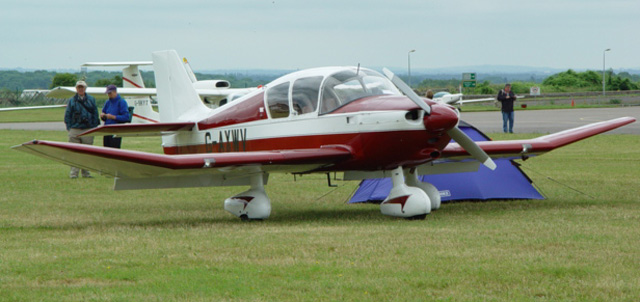 |
The Jodel DR253 was developed by CEA, and is
a `bridge' between the Jodel and Robin series of aircraft, and was
the first to carry the name Regent. The DR253 is essentially a DR250
(the four seat development of the DR200, above) with a larger tail
and nosewheel undercarriage. It has the more powerful 180hp Lycoming
O-360 engine and a gross weight of 2,420lb. It first flew in March
1967. 100 were built.
This one was at Kemble in July 2005. Photograph by Ivy |
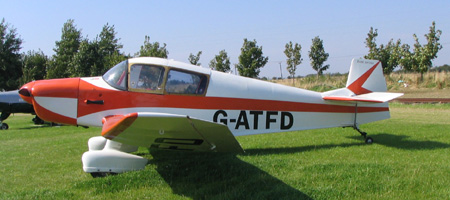 |
Jodel's three seater range comes in a variety
of names, designations and manufacturers, but are all fairly
similar. The range includes the Ambassadeur (DR100, 105 and 1050
built by SAN, DR1051 built by CEA, all with gross weight 1,650lb and
Continental C90 or O-200 engines); the Excellence (DR1050M, built by
SAN, with 1,710lb gross weight, swept fin and other refinements);
and the Sicile Record (DR1050-M1 or DR1051-M1 depending on engine
tyoe, built by CEA and similar to the Excellence). Length is 21 feet
4 inches and wing span is 28 feet 7 inches. The Ambassadeur cruises
at 120mph while the more refined Excellence and Sicile Record manage
145. Range of all types is around 650 miles. About 625 of all models
were built, just over half by CEA and the rest by SAN, plus a number
of homebuilt examples.
This CEA DR1050 Ambassadeur was at Skegness, September 2005. |
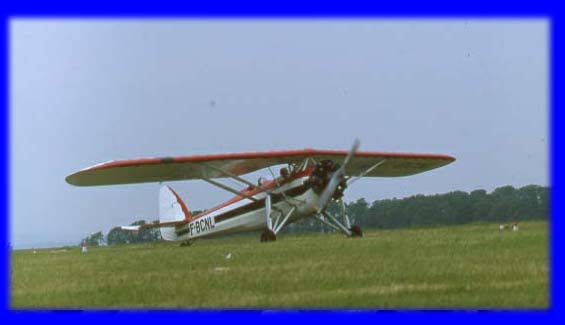 |
The Morane-Saulnier MS317 parasol-wing two
seat trainer first flew (as the MS315) in October 1932. Its main
role was as a military trainer, serving with the French air force
until the second world war. The MS317 is essentially just an MS315
with a more powerful (220hp Continental W670K radial) engine. It has
a gross weight of 2,315lb (a lot for its class), top speed of 125mph
and range of 350 miles. It is 24 feet 11 inches long, with a wing
span of 39 feet 4 inches. I infer from the constructors' numbers of
the last surviving examples that over 500 were built.
This one was at Cranfield, date uncertain. |
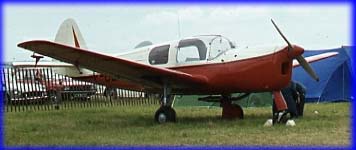 |
The Nord 1203 Norecrin was developed by SNCAN
(Societe Nationale de Construction des Avions du Nord) in France as
a nosewheel undercarriage version of the Noralpha, which in turn was
a development of the Messerschmitt Bf108 Taifun. It is a four seater,
powered by a 145hp Regnier engine. This gave it a top speed of
140mph and range of 530 miles. Gross weight is 1,730lb, length 23
feet 2 inches and wing span 33 feet 6 inches. It first flew in
December 1945. Just under 380 were built. Note the extremely high
dihedral angle, characteristic of the Nord variants but quite
different from the Bf108. This one was
at Cranfield in July 1980. |
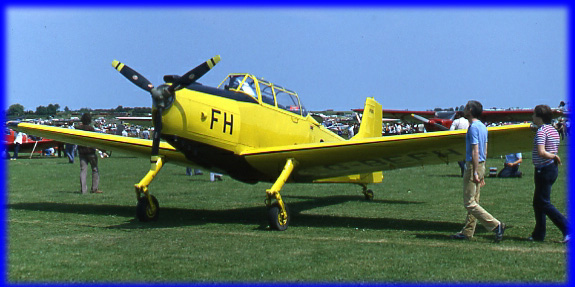 |
The Nord 3202 was originally developed as a
trainer for the French air force. It first flew in April 1957, and
was intended as a replacement for their ageing Belgian Stampe
trainers. It is powered by a 240hp Potez 4D32 engine, which gave it
a top speed of 200mph and range of 625 miles. Gross weight is
2,700lb, length 26 feet and wing span 30 feet 10 inches. Only 100
were built, all for the Armee de l'Air.
Several have now found their way into private ownership, including
this one, which was at Cranfield in July 1983. |
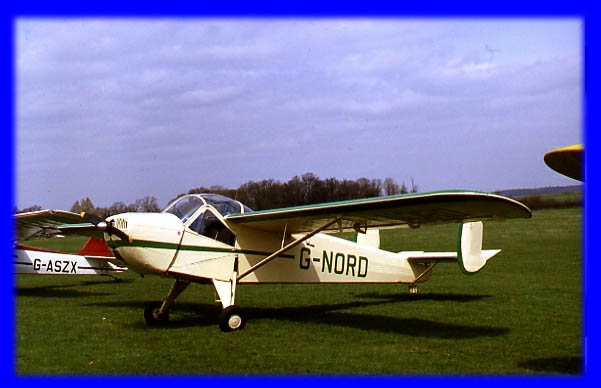 |
The Nord NC854 was originally developed by
SNCAC (the final C denoting Centre) prior to their merger with Nord,
hence the NC designation. It is a light two seat tourer, easily
distinguished by its shoulder-mounted wing combined with the twin
tails. It came in five basic variants, differing in engine choice:
The NC853 has an 80hp Minie, NC854 has a 65hp Continental A65, NC855
has a 75hp Praga, NC858 has a 90hp Continental and the NC859 has a
115hp Walter Minor. The type first flew in 1948. The NC854 cruises
at 85mph and has a range of 375 miles. Gross weight is 1,340lb,
length 22 feet 1 inch and wing span 36 feet 7 inches. A total of 144
of all variants were built, of which 107 were 854s.
This one was at Old Warden in April 1979. |
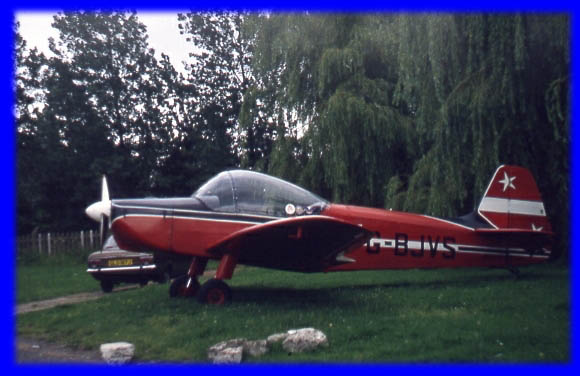
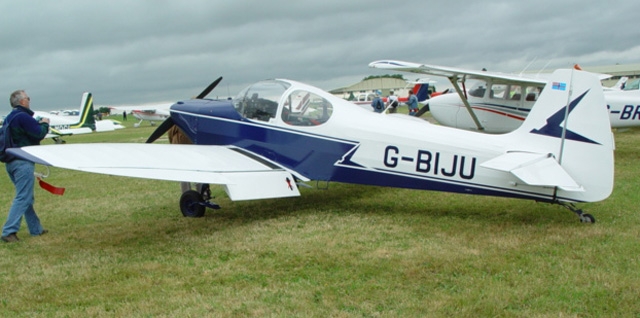
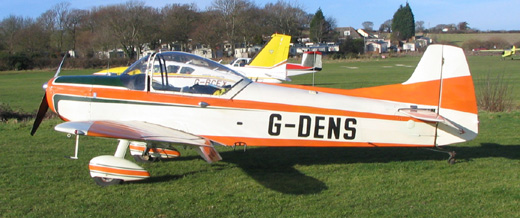 |
The Piel Emeraude was designed by Claude Piel.
The first example was a homebuilt, which first flew in 1951. The
type entered production with Scintex in France in 1953. Its sleek
lines, good performance and durability made it very popular. Several
companies have built Emeraudes under license, examples including
Scintex in France (who built 150, more than anyone else), Menavia, the
Binder Smaragd in Germany and Fairtravel Linnet in the UK. Many have
also been constructed by homebuilders, who find it both challenging
and rewarding thanks mainly to its intricate, elliptical wing. The
majority of Emeraudes (CP301 variant) are powered by a 90hp
Continental engine, though there are several other choices. This
gives it a top speed of 135mph and range of 625 miles. Gross weight
is 1,430lb; length 19 feet 11 inches, and wing span 26 feet 10
inches. The top picture shows a CP1310
Super Emeraude at Elstree in August 1980. The middle picture is a
CP301 at Kemble in July 2005. Note the different cockpit canopies.
The lower picture is a Binder Smaragd at Sandown in February 2006;
note the different tail and the wheel fairings. |





|